#JournalTask
Explore tagged Tumblr posts
Text
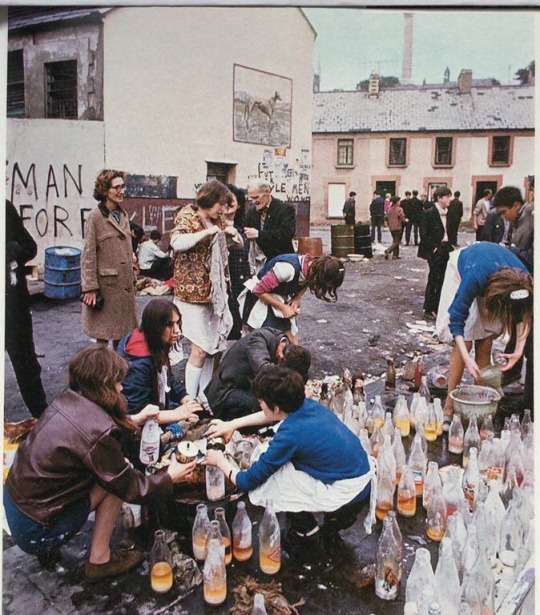
Girls making petrol bombs during the Battle of the Bogside, Ireland, 1969.
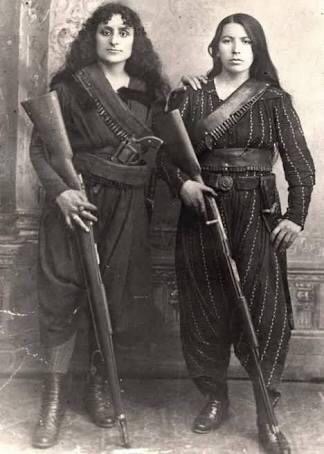
Two Armenian counter-militias fighting the Armenian genocide perpetrated by the aturkish Ottomans, 1915

Leap Radić hanged by Nazis for being a Yugoslavian Partisan during WW II, 8.02.1943.
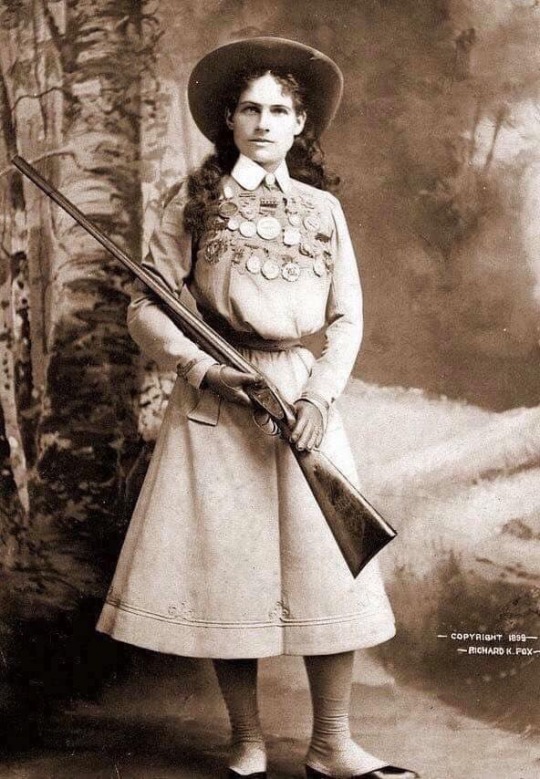
Annie Oakley, 1899

An old Armenian woman defends her house, 1990.
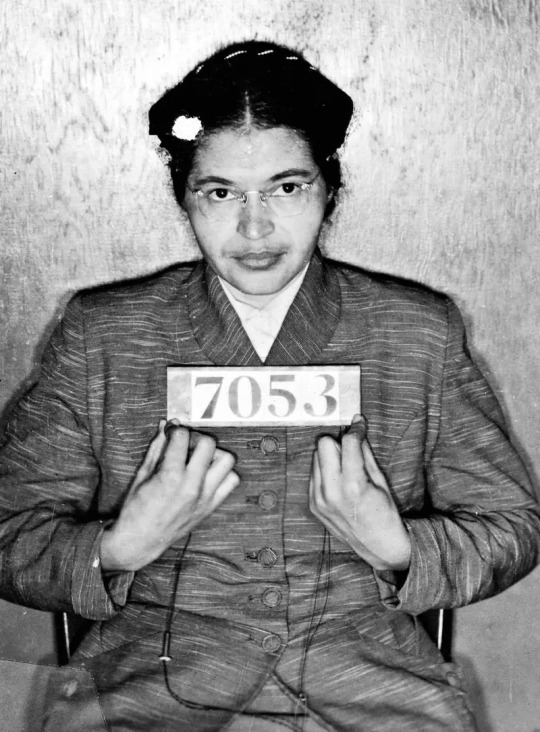
Rosa Parks, mugshot after being arrested for refusing to give up her seat on a public bus to a white passenger, 1955.
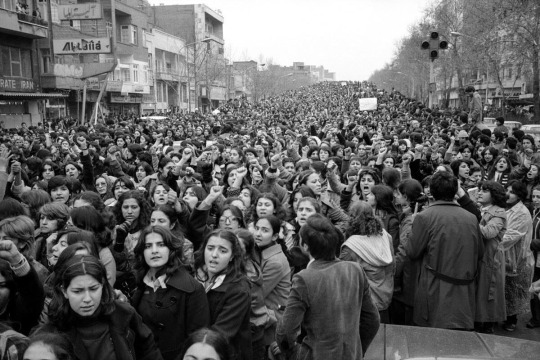
Women protesting forced Hijab days after the revolution, Iran 1979. Photograph by Hengameh Golestan
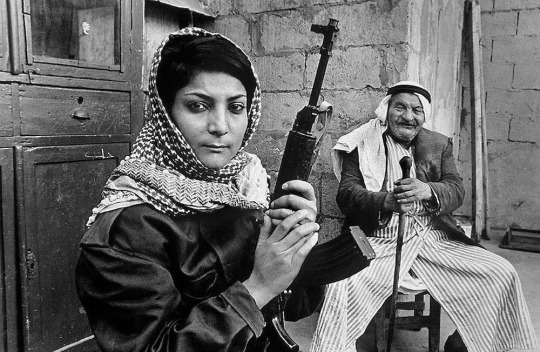
Palestinian fighter Leila Khaled poses with her weapon and grandfather in 1969. She became a vocal fighter often speaking in Europe against the Palestinian-Israeli peace process.
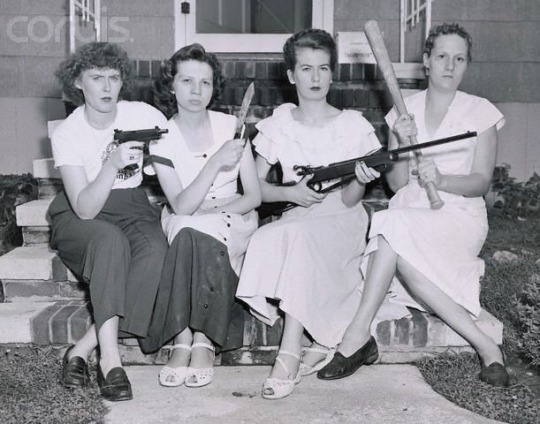
Four women from Maryland chased the men down and surrendered them. The men were terrorising the neighbourhood for several weeks. 1950
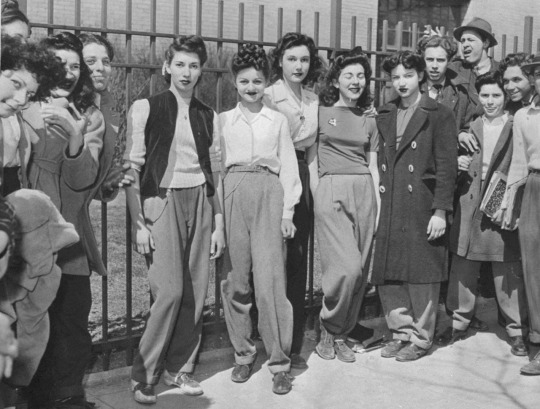
Girls at school in USA protesting the school dress code. 1940.
#visual research#journal task#westminsteruniversity#6imag001w#baphotography#journaltask#new woman#womensrights#demonstration#strike#womens strike#materials#womenempowerment#rosa parks#dress code#representation of women in photography
61 notes
·
View notes
Text
Feast for the Eyes - Exhibition - Advanced Research Methods
30th October 2019 - The Photographers’ Gallery
The second exhibition on when visitied the photographers’ Gallery, was Feast for the Eyes - The Story of Food Photography which broadly explored the history of food photography. There were a wide variety of work from different photographers such as Stephen Shore, Guy Bourdin, Hank Willis Thomas or even Russell Lee.
Again, I think any kind of methodology could be used while analysing this work. It might depends from images on their own than when looking at the whole body of work. But after rereading what I wrote about the exhibition, I think I unconsciously used a photographic theory kind of approach.
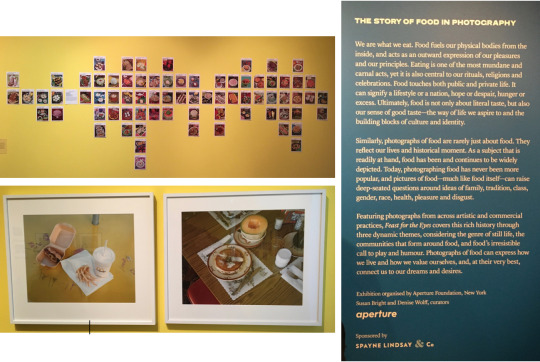
For example, the two images from Stephen Shore above could be analysed by looking at the history of still life. Why did he photograph them this way, what does it mean. We’ve learned in the past that whether it was painting or photography, the use of “rare” aliments was a way to show how wealthy people were. For example in one of the photo further below dated from the 1850′s from photographer Roger Fenton, we can find a pineapple which was quite a rare fruit to get at the time, it highlights a certain wealth that we can’t really see on, for example, Shore’s image above of a fast food meal.
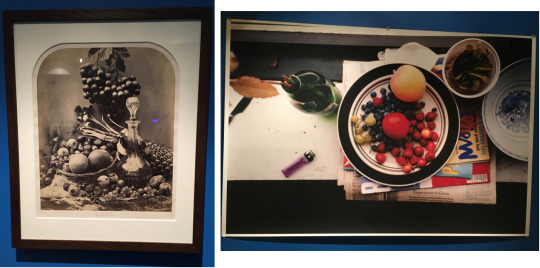
Roger Fenton, Decanter and Fruit, ca. 1853-60 (left) Wolfgang Tillmans, Summer Still Life, (right)
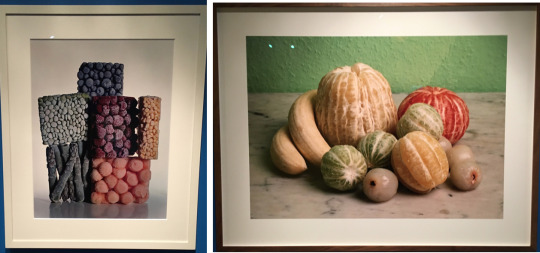
Irving Penn, Frozen Foods, 1977 (left) Holger Niehaus, Untitled, 2000 (right)
The two images above reminded me of something that Walter Benjamin wrote in his article about the book of Karl Blossfeldt on plant photography (Artforms in Nature) and how Blossfeldt’s images were a new way to perceive the world. In a way we rarely look at fruits and vegetable this way. Penn and Niehaus, both, showed us a different way to look at those elements, a way that we have never really looked at before.

Guy Bourdin, Vogue Paris, September 1981 Hank Willis Thomas, You’ll Never Guess Our Deep, Dark, Delicious Secret, 1984/2015
We could also find a lot of fashion and commercial images in the exhibition which was to me very unexpected but not out of theme. It was actually fascinating how disturbing some of them were such as the one from Guy Bourdin (above, left) of the two models eating sausages.
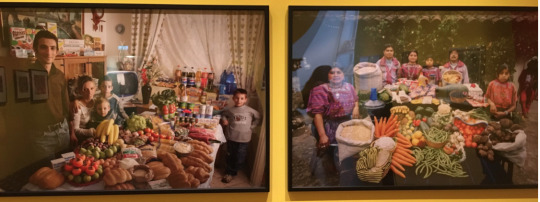
We could also find some more documentary directed kind of work such as the two images above from photographer Peter Menzel who photographed what families eat for a certain amount of time. It highlights how different our alimentation is depending on our culture and wealth.
Another quite interesting documentary images showed, was the images from Russell Lee expressing a rather harsh reality after the War.
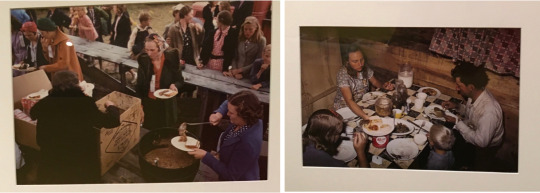
1 note
·
View note
Text
Advanced Research Method 3
9/10/2019
Week 3: Gallery Visit 1 - Olafur Eliasson at the Tate Modern
Blog task: Write a reflection on what you saw today. Which methodology/ies could you use to analyse images from the exhibition?
Today we saw Olafur Eliasson, IN REAL LIFE. This exhibition features a series of installation, photography, and sculptures mostly interactive. The way in which Eliasson decides to make the viewer engage is by introducing natural phenomena such as rain, fog or rainbow to make us aware of our senses, of other people around us, the environment and, most importantly, the planet we live in. At first, I thought there were too many people in the gallery for me to be able to experience it, but I then realised that the whole idea is the engagement that society has with the environment and it was quite interesting to see how different people were reacting to each of the installations and mediums used by the artist.

credit (Picture taken by me inside “Din blinde passager”)
The Methodology used to analyse the exhibition In Real Life is mostly aesthetic if we look at “Din blinde passager (your blind passenger)”, A 45m tunnel of fog where visitors are stepping forward with uncertainty and surprise - or the room called “Beauty, 1993″, a humid room of quiet rain&mist that creates arainbow in which the artist represent the sublime effect of nature.

credit (Beauty, 1993 Photo: Anders Sune Berg)
Both are absolutely aesthetically beautiful as well as clever and, in my opinion, it is definitely different from painting as it gave me access to all 5 senses.
Moreover, a piece such as “Your uncertain shadow (color), 2010″ gave me a doubt.

credit (Tate Modern, London Photo: Anders Sune Berg)
Is there an ethical question there? I just found it aesthetically pleasing and it could easily be that the whole idea of the artist was simply for the visitors to have fun?
With no doubt, Olafur Eliasson’s reason for emphasising the immense power of nature could almost entirely be analyses from an ethical point of view. Looking at one of his most famous piece “Ice Watch” NOBODY could fail to be aware of what is the message is.
The artist is raising a question: these beautiful installations with glaciers and rains and rainbow that you are photographing and interactively enjoying is our planet and it is melting. But does the end justify the means? The artist extracted and carried with vehicles 30 blocks of glacial ice from the waters surrounding Greenland, placing them in London and leaving them to melt. Although his intentions are certainly honest and good, his ethic for some people could be questionable.
What I found extremely interesting was at the end of the exhibition. There was a wall full of newspaper articles, interesting facts, and quotes from the artist and other sources. Although this collage looked a bit confusing at first I started taking pictures of everything so I could read them more carefully at home. Most of the articles are extremely useful for my essay for the VISION&TECHNOLOGY module as they all talk about vision and perception and the way people experience art.
If I could change something from my experience I would go back to the exhibition by my self and spend more time reading the articles as the problem I have encountered while I was there is the fact that there were too many people around ( especially students) and it was a bit distracting.

( Phone picture of an interesting quote - will use in my essay)

( Phone picture of an interesting quote - will use in my essay)

( Phone picture of an interesting quote - will use in my essay)

( Phone picture of an interesting quote - will use in my essay)

( Phone picture of an interesting quote - will use in my essay)

( OVERALL Phone picture of interesting quotes - will use in my essay)
I have decided to go back and I have bought a ticket to go again on the 20th of December !!!! In addition, I have watched Olafur Eliasson's documentary on Netflix where the artist himself explains the reason behind his work, the technicality, the ethics, and his personal life. This was extremely helpful to understand the artist point of view as well as the reason behind his work :
youtube
(Trailer of ABSTRACT: THE ART OF DESIGN Season 2 Trailer (2019) Netflix - taken from Youtube)
1 note
·
View note
Text
Shape of Light Exhibition, Tate Modern
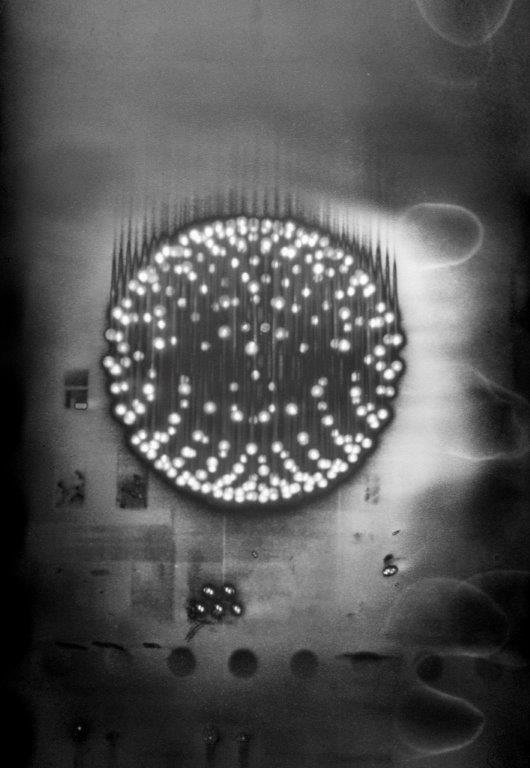
This was one of the most inspiring exhibitions I had been to in quite a while, this exhibition has really opened my eyes to new ways of executing photographic methods. I had recently been questioning what photography is to me and how it can be considered a skill or how photographers can be considered as talented as a painter perhaps, but this exhibition with all these beautiful and unique abstract forms of photography has really inspired me to try quite literally everything I’ve seen here, I came for inspiration for one project and left with several.
An artist who really stuck our for me was Peter Keetman, who had a series entitled, ‘Light Pendulum Oscillation’, an intricate and somehow almost mechanic dance of light exposed into a crisp photograph. A significant part of this series is the contrast with the more concentrated pieces of light creating some incredibly bright eye-catching areas and some equally beautiful faded and spaced out, creating mysterious almost murmuration-esque patterns.

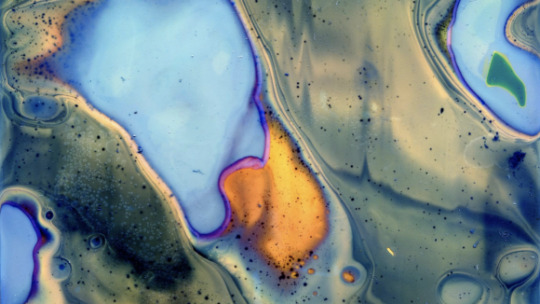
Another incredibly beautiful form of abstract photography that I found was the use of chemigraphs, these create incredibly abstract and beautifully coloured and ironically fluid flowing images. The creation of chemigraphs brought together two different artistic forms of painting and photography, the chemigraphs presented within the exhibition are used without a camera (so I suppose does this still class as photography or is it painting with chemicals or just another medium altogether?) they are created through using photographic chemicals on light sensitive photopaper. The outcomes are entirely unique although different effects can be achieved by changing the light that hits the paper or many artists have used materials such as wax, polish or varnish to block chemical reactions, creating the most beautiful and unexpected abstract ‘photographs’.
2 notes
·
View notes
Text
Group presentation seminar
For the Advanced Research Methods seminar presentation group work, we got given the task to elaborate on the method of Art Theory. Upon meeting with our Tutor, we chose to focus our work around Conceptual Art. We split the theme into different sections, so each one of us would mention different aspects of this movement, as well as the different artists that took part or got influenced by it.
My part of the presentation was about the historical and political dimension of the movement, so i ended up picking a Chilean Art collective that went by the name of COLECTIVO ACCIONES DE ARTE (C.A.D.A.).
This collective was mainly active from 1979 to 1985, after the dictatorship that oppressed most Chilean Art from 1973 went down. Their work was mainly revolved around the dictatorship years and the effects of it on the newly democratic Chile. Their pieces were usually public displays of art or performances which the general public could participate in, and they were highly political and disruptive.
To showcase their work, I started by mentioning the history behind the collective, and the social and political situation at the time, followed by three examples of their most famous pieces : “No Mas” (), “Para no morir de hambre en el arte (Not to Die of Hunger in Art)”,and “¡Ay Sudamérica!”.
While researching for the presentation I found a lot of new information about not only Chile but other South American Countries and how conceptual art took form there. There were major similarities to the art that was coming from the US but adapted to a different way of living. This example was most clear in the second work that I analyzed, where the bottle of milk was a symbol of human rights and social necessities. This can be compared to works from American artists that used products and consumerism to make similar statements.
Being the collective active a little after conceptual art sprawled out as a movement, due to the oppression of art during the dictatorship years, is also interesting as we can see their works as responses to American Artists that pioneered conceptual art.
Overall, I think the seminar group work was very productive, as it challenged us to put together different types of artists (in our case every artist was from different nationalities) with different perspectives of what conceptual art meant as a medium for them. Furthermore, how history, social and the political situation of the artists country influenced their work.
I will definitely look into incorporating some of what I learned in my future work and upcoming essay, in regard to history and art.
0 notes
Text
Advanced Research Methods
Essay Notes:
For my essay I have considered using deontology as the main theory of ethics and focus on Immanuel Kant’s philosophy of ethics.
Deontology – you have to do your duty (deon derived from Greek language- duty). You have to do what is right in the first place, because it’s the right thing to do regardless.
Then discuss three images in relation to the theme of ethics using philosophy as method to analyse the images. One image I want to discuss in this essay is Starving Child and Vulture Kevin Carter, 1993.
...tutorial to help understanding and relation.
Layout: (approximately)
Intro - 250
Theory of Ethics/ Kant - 650
Photographic Case Studies - 500 words each
Summary - 300
Conclusion - 300
Bibliography
0 notes
Text
Advanced Research Methods
Queer Theory Presentation
My Part- What is queer theory?
“Queer theory” is an area of study used in both the literary and artistic fields to examine work with regards to what are seen as norms; like gender and sexuaity, created by society. Within queer theory we can look more closely at work that isn’t widely considered to be a part of a particular genre or come with a particular subject like the gay community or questions around gender and we can analyse these particular photographs while thinking about what the images may be saying about the social normalities of the time and this can include a wide range of specifics. We can also use queer theory to study work that broaches the subject of being different in a clear and purposeful way. Using queer theory to examine work about the gay community, whether the work explores the hardships suffered by its members throughout history or to honour the members of the community by proudly presenting their image, gives us a clear and useful insight into the work. Then we can closely examine how these images affect and represent the group that they aim to speak for.
We can look at this work, also, with a historical context in mind as there is a long and interesting history surrounding the fight against social norms and the injustice posed upon those who do not appear to conform; for example the Suffrage Movement in the early 1900’s that fought for women's rights and dealt with gender conformity, and the Stonewall riots in 1969 that started the LGBT movement and fought for the rights of the gay community and against the persecution of people for their sexual orientation. A historical view in queer theory adds valuable context to both work that isn’t inherently about social constructs and work that aims to celebrate those that society may call outcasts and shine light upon the injustices suffered in many communities that don’t appear to be a part of normal society.
Queer theory is a way in which to study specifically the areas of a body of work that communicate an air of unconformity and look into the ideas of representation, context and narrative surrounding any person or group that do not fall under what was/is considered normal by society at any given time.
0 notes
Text
Week 6: Gallery Visit 2
'Shot in Soho’ is an exhibition currently held in The Photographers Gallery, situated in the heart of Soho. The exhibition looks at a collection of works from artists, which shows the beauty of Soho and celebrates its diverse culture, community and history.

John Goldblatt Untitled, from the series ‘The Undressing Room’, 1968

William Klein Men hidden their faces / 69 Sauna & Massage
As a whole, the exhibition can be analysed with Queer theory. This can be explained by the lack of social norms being followed. The exhibition looks at sex work, private members clubs, online dating and the current way of meeting and hooking up. These all display non-confirmative standards of sex and relationships.
0 notes
Text
ARM: Preparing For the Presentation & Conclusion
2 weeks before the presentation
Only me And Misaki came to talk about what we’re going to do. We agreed that we should continue with Conceptual art because everyone seemed to have interest in it. We started by looking into what exactly conceptual art is through loads of different books but the best one that allowed me to understand conceptual art a bit better was “Conceptual art” by Tony Godfrey
*Notes from Sketchbook*
What is conceptual art?
-Art that looks beyond the traditional values of Aesthetics and Materialism and focuses on the “concept” or the idea of the artwork.
When did it start?
-Believed to fully emerge in the 1960’s.
- Early works can be seen in the 1917’s, most well-known example being “Fountain” by the “Readymades” Marcel Duchamp.
- A urinal signed and dated “R.mutt, 1917”
- Can an ordinary day to day object such as a urinal be considered as a work of art? Why can it or why can’t it not? what exactly even is art?
- That’s what conceptual art is kind of about: loads and loads of questions.
Why did conceptual art happen?
-A reaction against the previous movement: Modernism,1914.
- A quote from Tate’s website to explain modernism. “A rejection of history and conservative values (such as realistic depiction of subjects); innovation and experimentation with form (the shapes, colours and lines that make up the work) with a tendency to abstraction; and an emphasis on materials, techniques and processes.”
-Examples Jackson Pollock and Ansel Adams.
-Conceptual Art decided that the images didn’t provoke enough questions and it was boring.
-Used mixed mediums which Modernism was strictly against.
- Example of John Baldessari.
When did it end?
-Didn’t last very long, ended in mid 1970’s.
-Continues to inspire people, e.g being the Young British Artists. Could argue the YBA used conceptual art as a scapegoat to produce shocking rather than thoughtful work.
AFTER THE SEMINAR: CONCLUSION
I thought the seminar overall went quite well. I think that the best thing we did was look at how conceptual art was inspired throughout the world rather than using only examples from America and England. Another thing that was quite nice is that Misaki took more of a critical analysis of her work and argued why even if Hiroshi Sugimoto considers himself to be a conceptualist he did some things that would not be considered as conceptual art. So, yes, it was nice to hear a critique on people who think of themselves as conceptual artists. One thing that could have went better if I did not panic and forget some of the things where I have went more in depth of the history between modernism and conceptual art, but that is just my own personal issue rather than the whole groups.
0 notes
Text
Women Rise Up part1
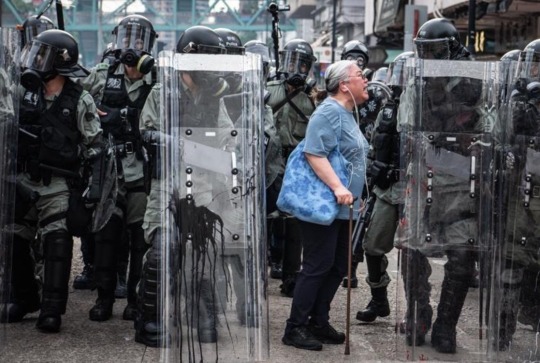
An old women confronts Hong Kong police.
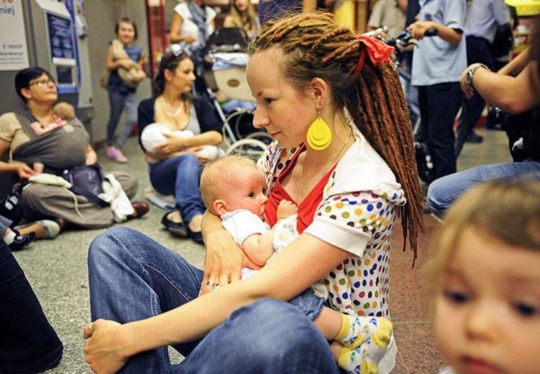
Polish women take a part in a Breastfeeding Is Not Obscene protest in Warsaw.
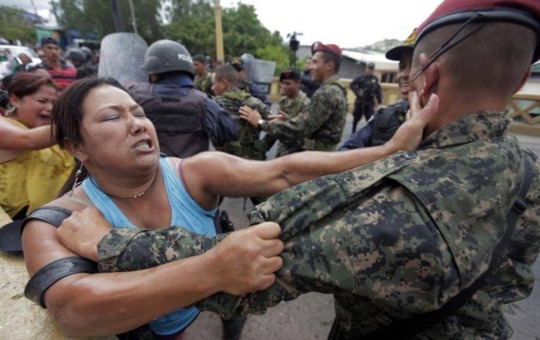
Police in Honduras represses demonstration of women against gender violence.
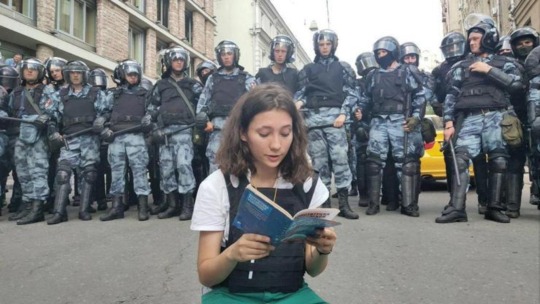
Against injustice and oppression in Russia. Olga Misik reading the Russian constitution while being surrounded by armed Russian riot police.

A young woman Alaa Salah, an architecture student, is leading powerful protest chants against president Omar al-Bashir.

Woman stands up to more than three hundreds nazis and refuses to let them pass in Sweden.
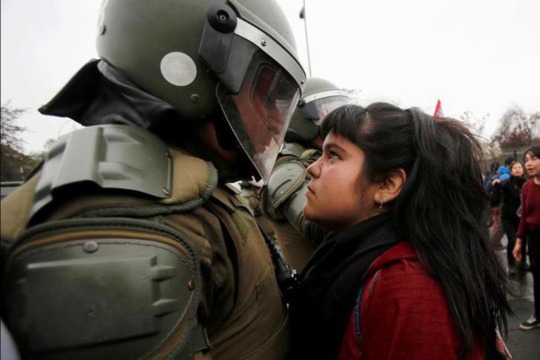
Young female protester. Pro-democracy protest in Chile.

Brazil women on the streets. Protests for a better future.

Palestinian girls against Israeli troops.

Chile, Santiago.
#westminsteruniversity#BAP#6IMAG001W#visual research#visualwork#womensrights#womens strike#womenempowerment#representation of women in photography#archives#2019#RiseUp#unauthorised gallery#photojournalism#journaltask#standup#gender stuff
23 notes
·
View notes
Text
Psychoanalysis Presentation
Today was our presentation for Psychoanalysis. I focused on the three parts of our mental structures. This is the id, ego and superego. The feedback that we got was that we educated the audience on the basics of the psychoanalysis but when asked they still didn’t know what it actually means. This was a hard task for me due to the fact that its a very big subject to take on in such a small amount of time. It was hard for me to grasp the context of it all as the three segments were not in the brain or anyway physical so its not something that can be proven that is real. However, I am going to use the dream theory within my beyond the frame work as this ties in with the unconscious and conscious mind theme. An improvement that we should of made was to collaborate more as a group & to broaden our knowledge a lot more.

If I was to improve this and do this again I would make this more modernised and how it can help us today. I would of started with an example. Think of a horse carriage, you’ve got the horses pulling the carriage forward, you’ve got a rider controlling the horses, steer them and whipping them to make them run and this like the relationship between the ID and the Ego. The ID are the horses and the Ego is the person. But then inside the carriage is his father yelling at him where to steer the carriage and this is the SuperEgo. This clearly illustrates the functions of the psyche.
The ID can be described as your base instinctual desires. This is the force within you and is more unconscious. A horse is always doing its own thing and only cares things when he is thirsty or hungry. The Ego is more of the rider, the conscious one and he is more in control and thinking more long term, he is planning and the more realistic person. The father is the wise one, he knows best, he’s got experience, morals, ideals, standards. The Superego is the part of our psyche that moralises part, its our conscious, the ideal self but also the critical self. Inner critic we have that tell ourselves we can do better. After researching more about it after I finally understand the key elements that the three have on the psyche.
However, the way I see the Ego is through a spirituality. I never mentioned this in the presentation because I didn’t want to remove the format of psychoanalysis. Sometimes people use their Ego because they are still in their Spiritual High - this when you are just discovering that other part of yourself, your finding your connection to the universe and finding their way to the finishing line way faster to other people. The Ego is the belief system who put themselves up to anybody else and to be condescending and put other people down. A lot of people will use the Ego as a defense mechanism as they don’t want anything else bursting their bubble. They don’t want to be told that their belief system is shattered. They treat life like its a formula. Because spirituality is my belief system I can’t force other people to believe in this however I do have a voice which in the future I need to use to others in order for them to be open to new ideas. This presentation was a real struggle for me and after watching the Philosophy presentation I wish I went down that route as it suits more better to my belief systems compared to Psychoanalysis.
0 notes
Text
Presentation
(week 7/8)

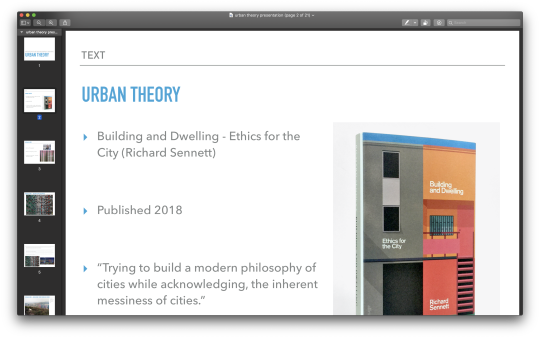
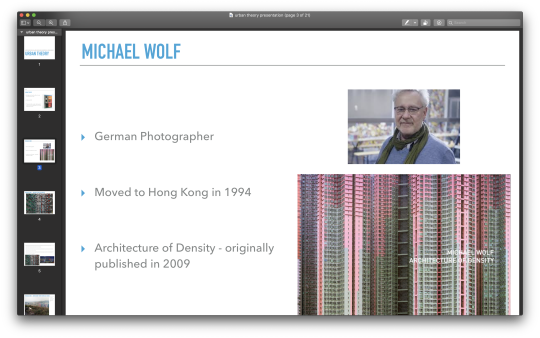
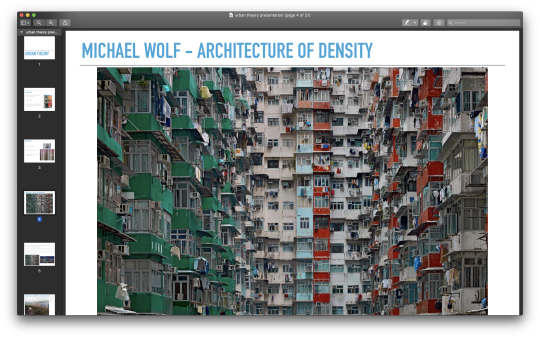
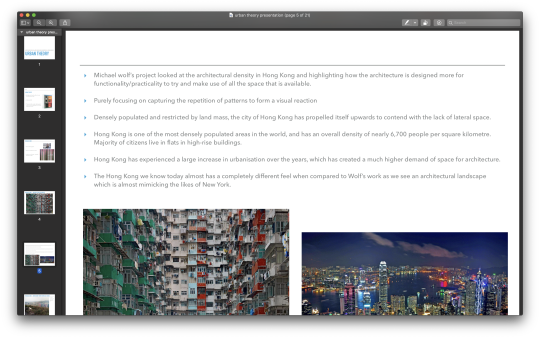

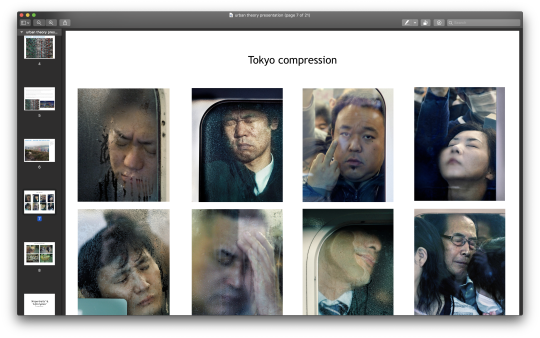
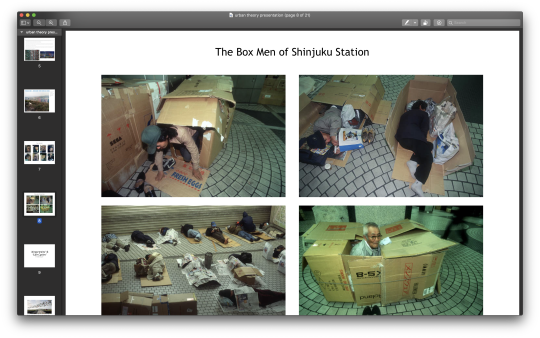


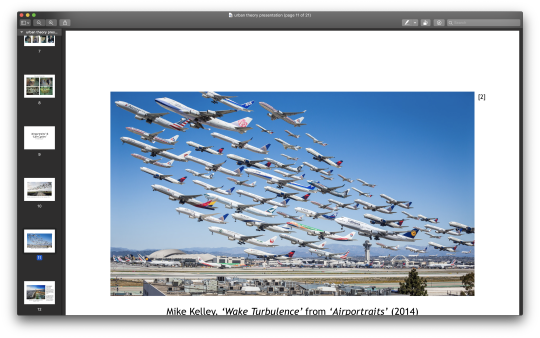
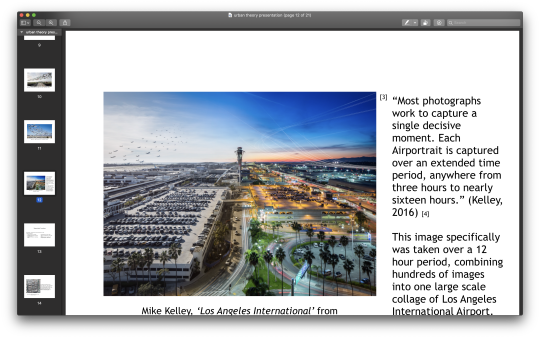


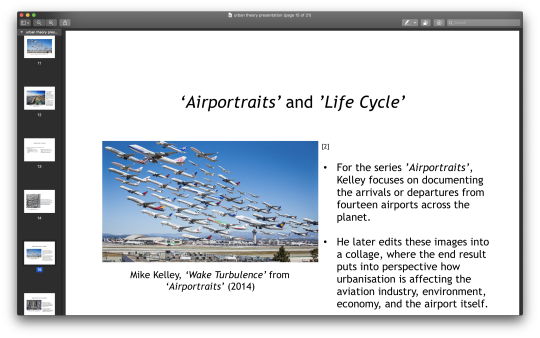
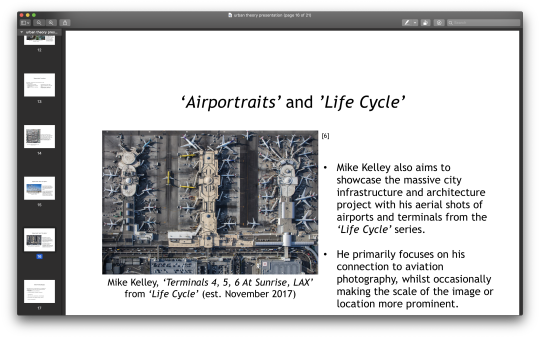
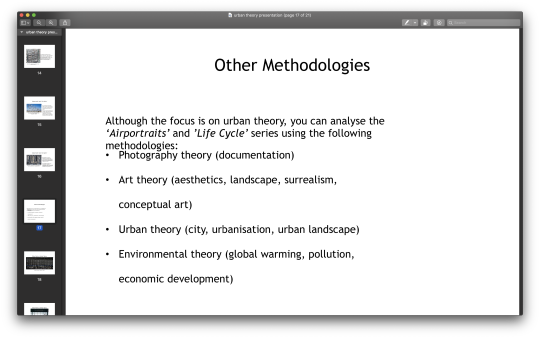
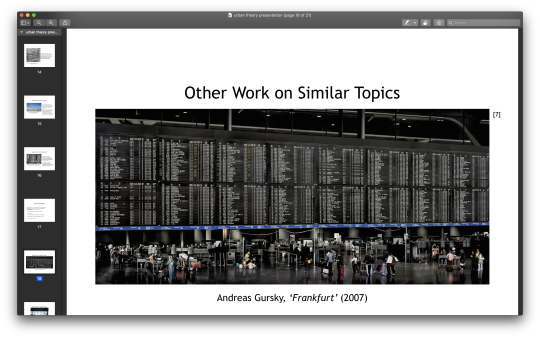
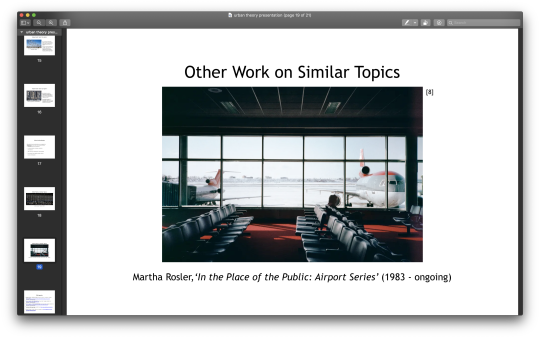
0 notes
Text
ARM - Journal Task 4
Lecture Date - 16.10.19
Week 4: History and Theory of Art as Method
Blog Task: Discuss how you might use areas of the history and/or theory of art in analysing some appropriate images.
We looked at the way in which history and theory can be used as an art method in order to analyse an image. There are many ways in which history can be viewed through photography and art in general.
What is Historical Research?
“Historical method is the collection of techniques and guidelines that historians use to research and write histories of the past. Primary sources and other evidence including those from archaeology are used.”
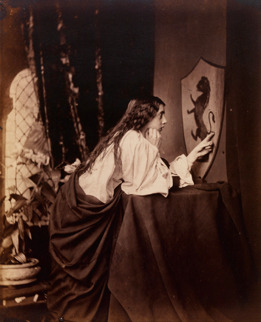
This image shows a lot of history, I feel this because the way this woman is dressed in the long white baggy top and the what I think would be a brown skirt. The background of this image is very dull as there isn’t much in the background.
A lot of different work with a lot of potential
Help with different movements and show the difference between art and photography
Photographers are trying to find different art forms by looking at different artists such as the difference between the photographers and the painters.
In this lecture, some of the images that we were firstly presented with that are in my opinion are all very much the same. For example, they are all mostly early 50’s photographers or painters. They are all very dull, but they all consist of the royal colours. The history of art is very useful when analysing photographs. The way people saw the world through the camera was heavily influenced by art and the way people saw the difference between photographer and painting. For example, photographers from the 19th century looked to art and paintings for inspiration, and then at the same time painters were working and looking at photography. In the early 20th century it began to separate and then used different machinery to look at the modern world in all different angles. Because when a photographer inspired painters to see the world through photography in a different way.
0 notes
Text
Advanced Research Methods
Shot In Soho Exhibition
- Gender
- Art Theory
- Feminism
- Queer Theory
- History




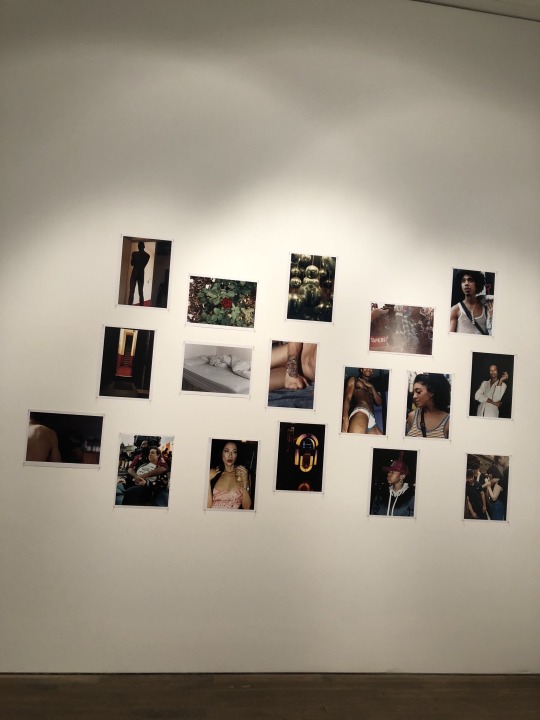







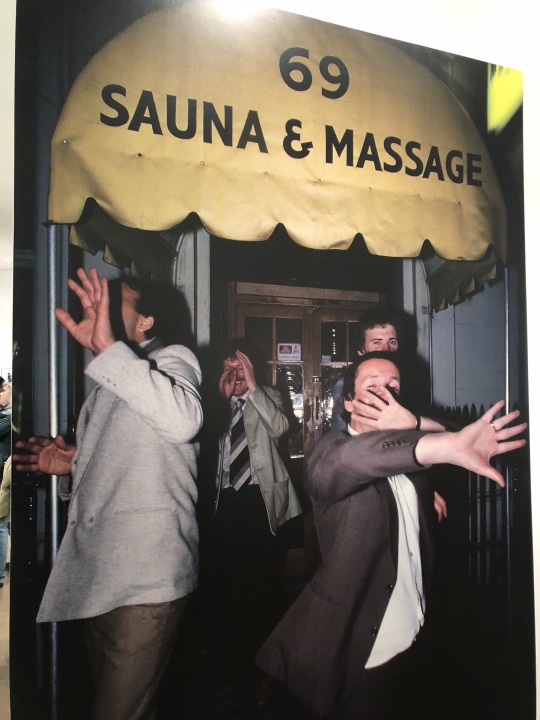
0 notes
Text
Presentation - Group exercise - Advanced Research Methods - Psychoanalysis
20th November 2019
After choosing the method of psychoanalysis for the group presentation, I was put into a group with two other people (Miro and Tanya) with who we decided for each one of us to explore a topic of our choice link to the chosen method. After long deliberation and many changes in example, I decided to look at part of Carl Jung’s theory on the personal and collective unconscious. Tanya concentrated more on Sigmund Freud’s theory using an example of her choice while Miro had a mix of both Jung and Freud’s theories using the example of William Klein’s work on New York and Antoine D’agata’s series entitled Antibodies from 2014.
Freud’s ‘Unconscious Mind’ Theory:
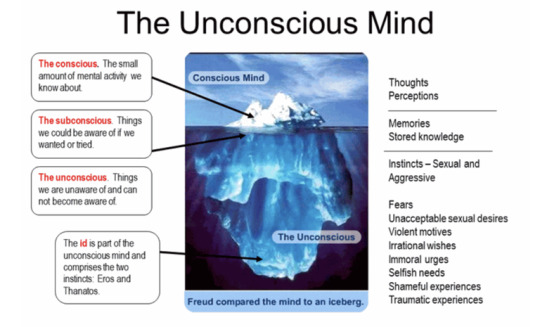

Personal Unconscious
Events or feelings that we were conscious of at some point but were slowly forgotten or repressed over time.
Senses and impressions which were never really strong enough to reach our consciousness.
Childhood memories
Feelings
Could also be something like even just a smell that we attribute unconsciously to a person or an events.
We can probably find it in anyone’s work. Whether as creator (photographer/artist) or viewers.
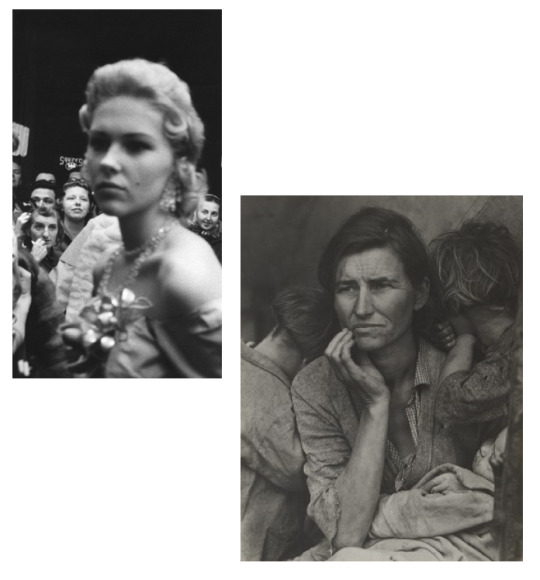
Robert Frank, The Americans: Blurry beautiful girl (actress) at a movie premiere. what is in focused? The other woman at the back -> The other women at the back, admiring, looking at her. We could almost he missed his shot.
Women looking at women -> Could it be envies? Was it really the photographer’s intentions?
What does it say about the viewer?
The Collective Unconscious
Contents common to everyone. “The collective unconscious, however, as the ancestral heritage of possibilities of representation, is not individual but common to all men, and perhaps even to all animals, and is the true bassist's of the individual psyche.” C. Jung, “The Essential Jung”, pp. 67
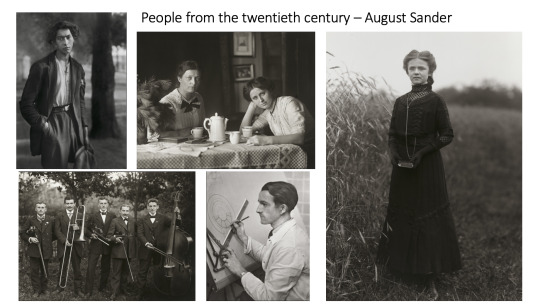
People from the twentieth Century by August Sander
French Philosopher Louis Althusser talked about the topic as Ideology and it was communicated through “images, myths ideas or concept” (Bate, 2009, p30)
Sander intended to create a “comprehensive cultural history and social analysis in pictures” of German people (the way Claudia Bohn-Spector puts it) by creating a collective portrait of German society during the Weimar era (Germany’s government from 1919 to 1933) trying to outline the existing social order.
We can feel a sense of conventionality in Sander’s image. Not only esthetically but also in the way he might have thought of society and maybe even how most people were picturing Society at that time. Another sign very noticeable is the chosen order of the presentation of his work: presented from a scientific point of view, arranged in 7 groups, published in 45 albums of approximately 12 images. Starting from the bottom (lower class) going all the way up and down again, ending his work with the sick, disable and dead. Often separating men and woman (unless it was a family photo). He apparently did it as an immediate observation. (that’s what the editor said) -> he followed his instinct.
A representation of what society thought of each other at that time.
The subject that I chose is link to my essay, this is mainly why I went on that road. Something I know for sure that I forgot at the end of my presentation was the references. I had them in my notebook but didn’t but them on the presentation and I noticed that everybody else had theirs on their presentation.
0 notes
Text
Second gallery visit
On the 30th of October (6th week of class) we took a trip to the famous Photographers Gallery, situated right next to Oxford Street, in the heart of London’s West End, to take a look into several exhibitions that were currently showing.
Starting of with the first one, with the title of “Feast For The Eyes - The Story of Food in Photography” this exhibition featured work from several renowned photographers such as : Martin Parr, Man Ray, Cindy Sherman, Nobuyoshi Araki and many others.
While the exhibition was a literal “Feast For the Eyes”, with many amazing prints of food that would leave your mouth watering, the message behind this display of works went way beyond our culinary desires. Food has always been a prominent subject of art, more so in photography and painting. And while the first floor of the exhibition focuses on more traditional artistic representations of food, the second one goes into the social and political dimension of it.
Food is part of our identity, it’s used to represent what makes us unique, but also what brings us together. It is a vehicle of communication and has been used throughout history in propaganda and advertising. So naturally a lot of the works displayed in this exhibition focused on how food can be used to represent a place and a time. But it also can be used as a political and social statement, such as the French artist JR piece named “Migrants”, which pictured an aerial shot of cross border lunch between the USA and Mexico or Donald Weber’s “Victor” which pictured a somewhat tragic picnic near the abandoned town of Chernobyl, representing the failed promise of human technology bringing better food and lives for people. Another good example of food photography representing culture is of course Martin Parr’s take on British cuisine, a full english breakfast is as much a symbol of English Culture as the Queen.
So to analyze the content of this exhibition we could use History, Art Theory and Globalisation Theory but it focuses more on the social and cultural history of food, while also having some more aesthetic parts.
The second exhibition at the gallery was “Shot in Soho”. Focusing on the rich cultural history diversity and acceptance that the area is known for, it showcases a wide range of work from known and lesser known artists such as : Kelvin Brodie, William Klein, Anders Petersen, Corinne Day, John Goldblatt and Clancy Gebler Davies.
Soho has been throughout history a special little corner of London,with an overcharged sexual atmosphere, where everything went down. It’s not a surprise that the majority of the work displayed was based around the various brothels, sex shows, drag performances and other related activities.
From William Klein’s “Twenty-Four Hours in the Life of Soho” in 1980 to more recent work from the likes of Daragh Soden’s “Looking for Love” we get a notion that the core elements that make Soho such a great place, such as the multiculturality, the openness, the creative atmosphere and the characters that make it their home, have not changed much throughout the times. But with the construction of the Crossrail Line, directly in the borders of Soho, this safe space is being in some ways threatened.
So in general, this exhibition brings together important work about Soho’s incredible cultural heritage while bringing in a light on the concerns over major infrastructure projects displacing this urban “village”. We can then use Art theory, social history, urban theory and gender theory especially since a lot of the works celebrate Soho’s LGBT embrace.







0 notes